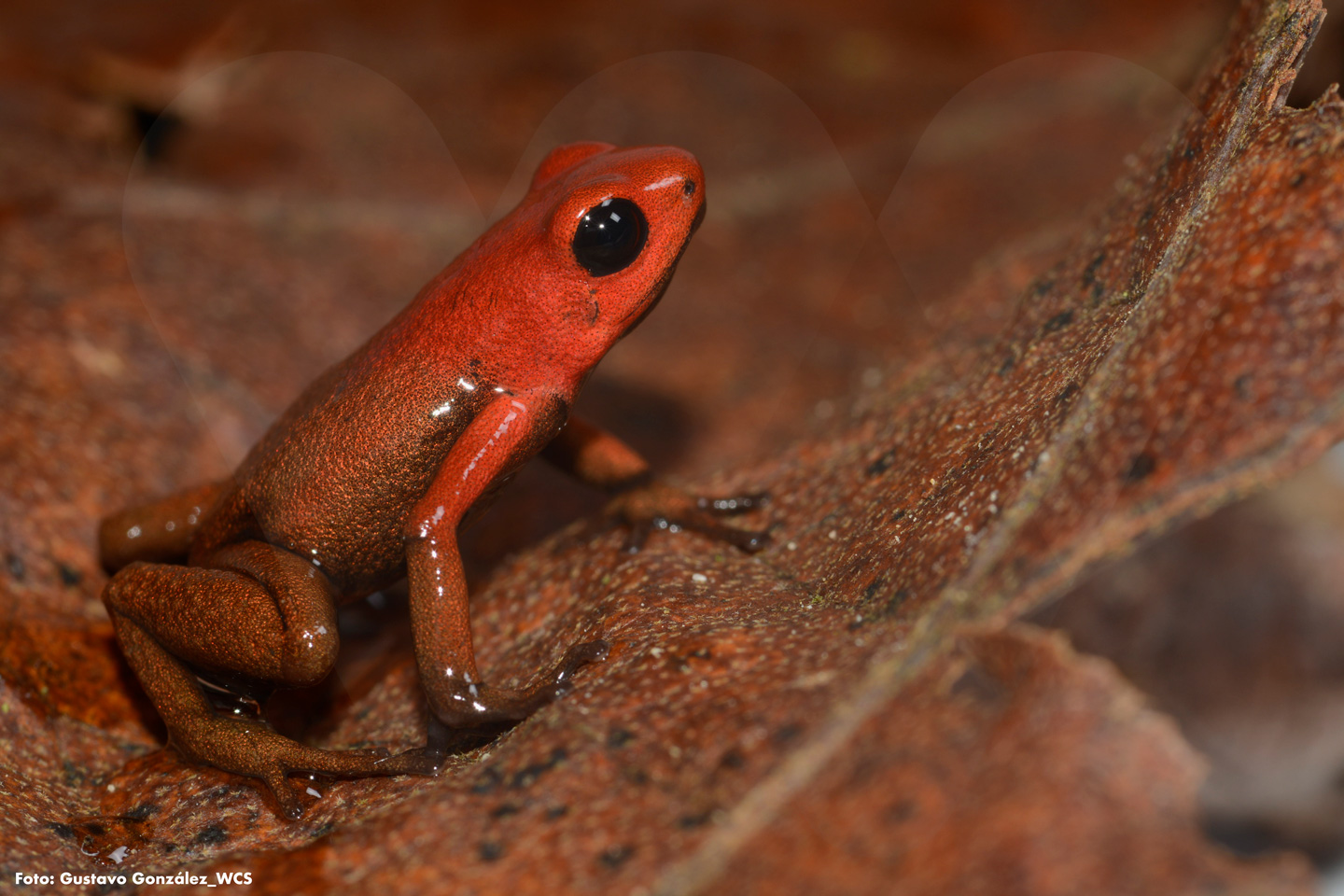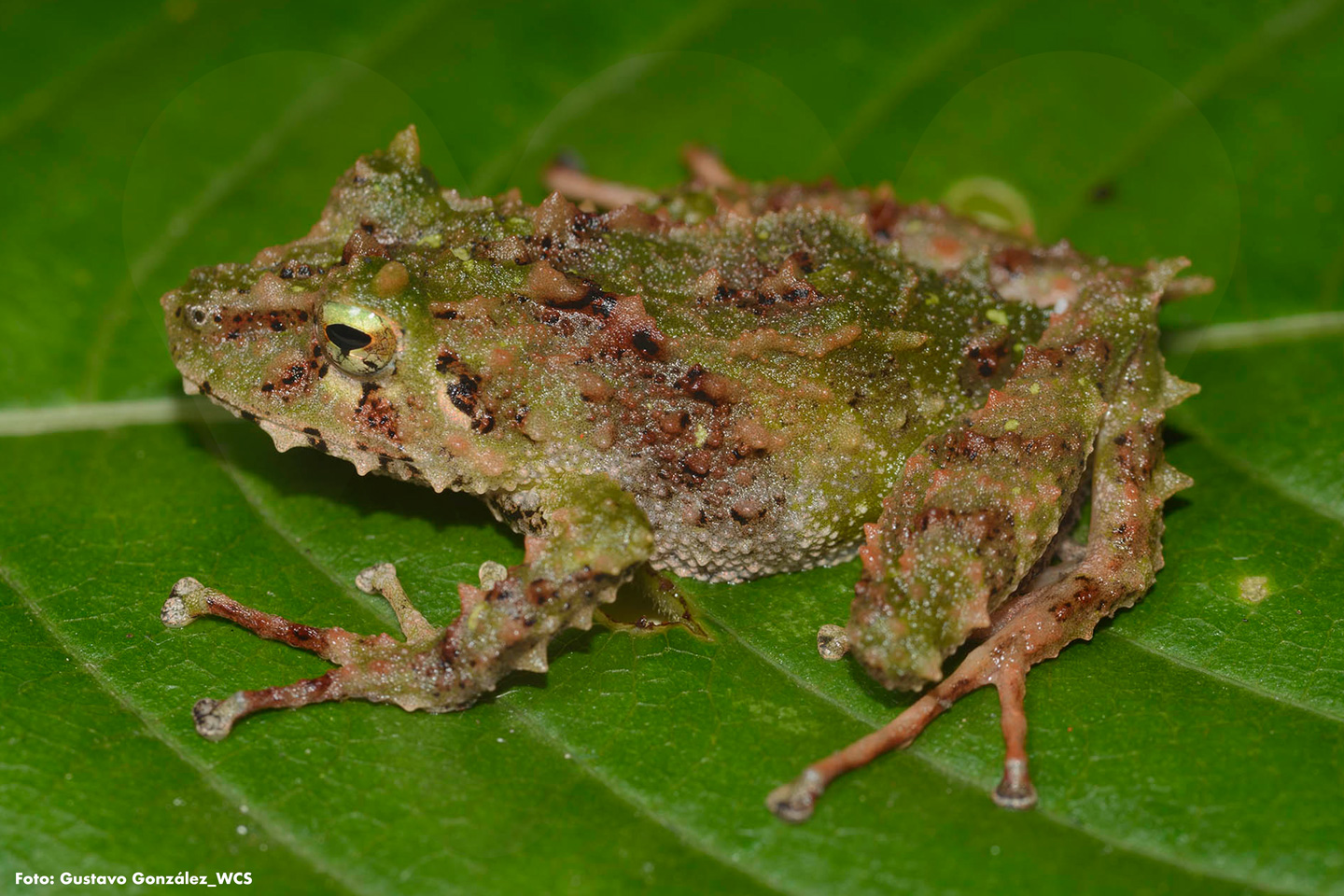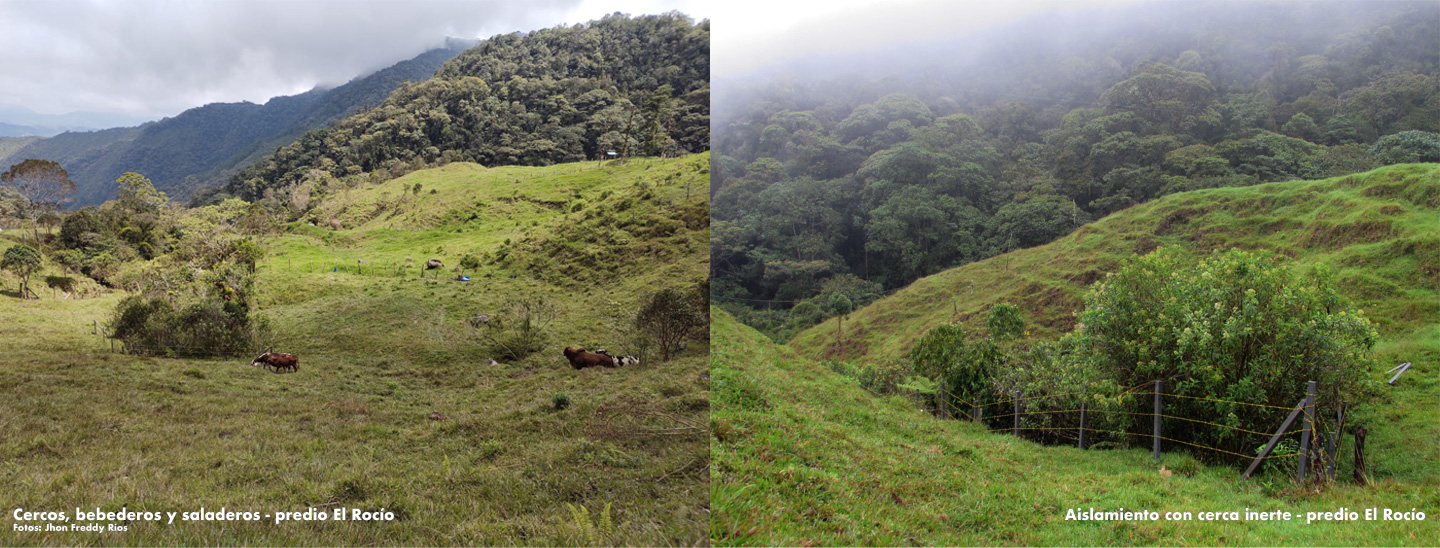This national protected area, located in Caldas, has the highest number of threatened species of these small vertebrates in Colombia, for an area of its size. Through the Strategy for the Conservation of Threatened Amphibians, WCS, Corpocaldas (Regional Autonomous Corporation of Caldas) and National Natural Parks launched a crusade, teamed together with communities, to recover their populations.
 Andinobates daleswansoni
Andinobates daleswansoni
Between Pensilvania and Samaná, in Caldas, and in the midst of a very rainy region sheltered by a large tropical rain forest from which La Miel River (one of the hundreds of tributaries of the Magdalena River) draws its waters, is the National Park Selva de Florencia, always known as the only home of many populations of frogs in our territory.
Twenty seven threatened species, eight of them endemic (they only live in this part of the planet) have been registered there, not an insignificant number for a reserve zone no bigger than 10.000 hectares (it would fit 426 times in the Chiribiquete National Park, the biggest in the country). However, of this total identified to-date, 6 are “critically endangered” and 6 “endangered”. 15 were catalogued as “vulnerable”. In short, these numbers place it as the protected area with the highest number of threatened amphibians for its size in Colombia.
There are many pressures that have led to this occurrence, such as contamination and deforestation, plus their restricted distribution. And because of this, WCS, Corpocaldas (Regional Autonomous Corporation of Caldas) and National Natural Parks, through the Strategy for the Conservation of Threatened Amphibians, supported by the Zurich Zoo and Fundación Santo Domingo, have teamed together with communities and launched a crusade to protect the stream vegetation isolating it from cattle, plant native flora and control the advance of cattle, with the intention of recovering the populations of these impacted species, some of them poisonous frogs and others notable for their colors.
This is part of a pressing national perspective: of the approximately 850 species of amphibians reported to-date in our 32 departments, at least 290 (34%) are on the International Union for Conservation of Nature’s (IUCN) Red List of Threatened Species.
In view of this, the Strategy for the Conservation of Threatened Amphibians is also monitoring and researching in the Tatama and Farallones de Cali National Parks, with significant frog populations in risk and where conservation plans in situ are being developed to reduce their threats.
Actions to restore forests
In Selva de Florencia, a national park that is celebrating 15 years of creation, there are private properties that extend inside and outside of the preservation polygon.

Park Director Hugo Ballesteros says that, many times, dairy cows that should remain enclosed, are allowed to go out and pasture without control. They not only contaminate water sources; they also trample forest grounds and destroy the homes of the small amphibians that generally take refuge among the vegetation or in the water coming down from the streams. For that reason, one of the first actions has been to design conservation agreements that will be signed with the owners of four properties during this month of October, committing them to allocate a part of their farms for conservation purposes.
Jhony Albeiro Arias Ortegón, of the Group of Biodiversity and Ecosystems of Corpocaldas, explains that this environmental authority will participate, supporting those agreements. ”Because we are interested in the participation of the communities in the protection of the environment and because we trust that this exercise can be replicated in other scenarios. We will evaluate its effectiveness and the results of our interaction with other organizations”, he explained.
Part of the land with the owners of which these agreements will be signed is located at the southwest corner of the park, and one of the properties is outside of its protected surface. They were identified as La Quiebra-La Divisa-La Bonita (182 hectares), El Rocío (40 hectares) and La Esperanza (45 hectares).
In total, over 250 hectares were allotted for preservation, where enclosures to protect forests will be built and streams will be isolated from cattle.
Here, the following endemic frogs can be seen: Andinobates daleswansoni, Atelopus sonsonensis, Pristimantis fetosus, Pristimantis tribulosus, Pristimantis actinolaimus, Pristimantis lichenoides, Pristimantis torrenticola and Nymphargus spilotus.
 Pristimanis tribulosus
Pristimanis tribulosus
“Here people’s word is still trustworthy and, therefore, we will almost certainly see a win-win: they will mainly benefit from a more adequate management of their territory and the species will find a better place for their development”, adds Ballesteros.
He refers, among other things, to the support given to the construction of plant nurseries for the planting of native flora and the reforestation of microbasins. “Treelings are rescued and planted in these nurseries. When they grow and develop, they are transplanted to strategic or restoration sites, nearby water sources. This helps to improve connectivity between existing vegetation patches and to protect the frogs”, explained Gustavo González, WCS-Colombia amphibian specialist.
The owners will protect the forests and the vegetation planted, will control their livestock keeping it away from the forest and will improve the use of water.
“This prevents the advance of erosive processes and the waste of water and, with the isolation of forests with inert or plastic materials, a restoration of flora can be obtained, favoring the configuration of biological corridors and the logging of plant species such as the Alstonville or Andean princess flower, very frequently used for fences”, says Jhon Fredy Ríos, WCS consultant for this implementation.

In retribution for these intentions in favor of nature, the owners of the lands receive the installation of cattle water tanks and systems for a better management of this resource, so livestock will not have to go to the streams to drink. Salt dispensers are also constructed for the nourishment of the animals. Better protected and better constructed, they reduce the waste of salt and other substances used for the cattle’s nutriment.
“This is the first project developed in the zone for the protection of amphibians. And it is important because the work in favor of frogs additionally contributes to the protection of the last belt of Andean rain forest for this part of the Coffee Region”, adds John Freddy. He also comments that all the work is complemented with awareness workshops for actors in the territory and exposure through radio and Whatsapp groups of six institutional messages that send peasants a teaching on the value of the species. “Normally people do not appreciate them because they do not know them and that is exactly what we already began to change”, he comments.
.jpg?ver=2020-10-02-223456-567) P. veletis
P. veletis